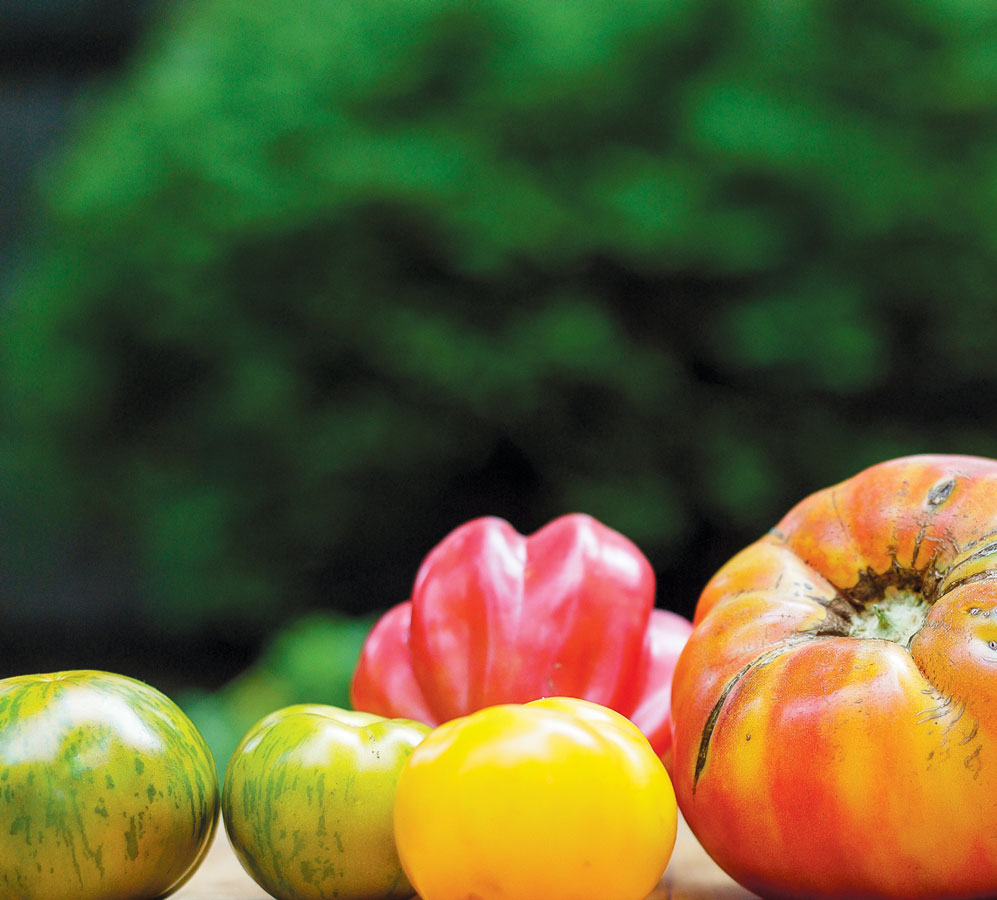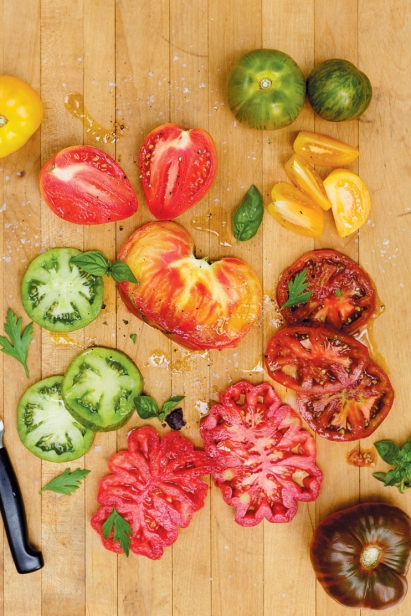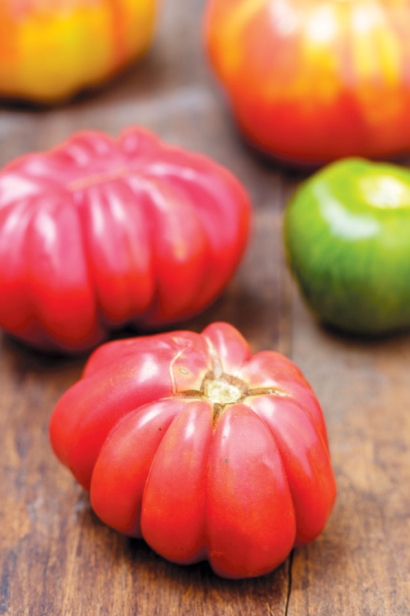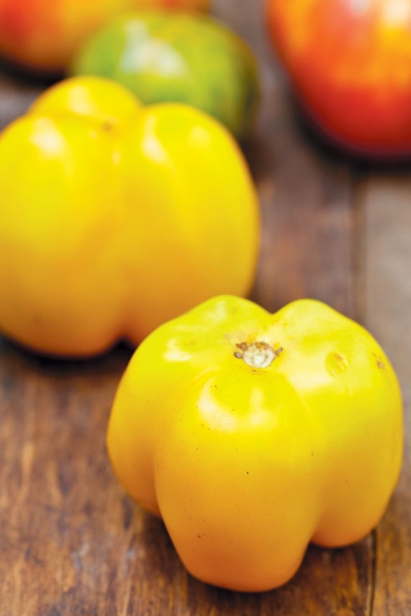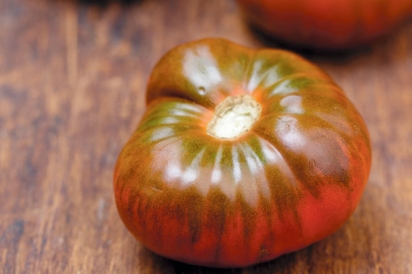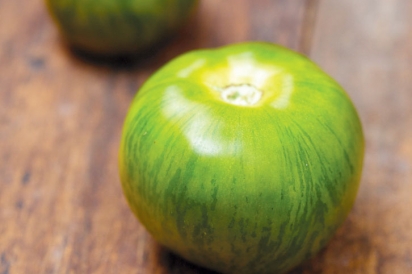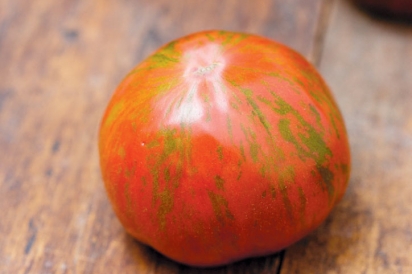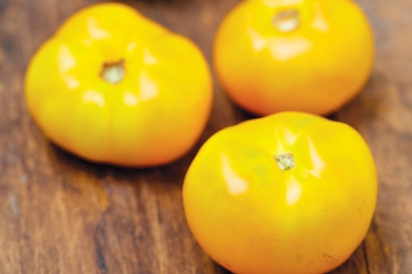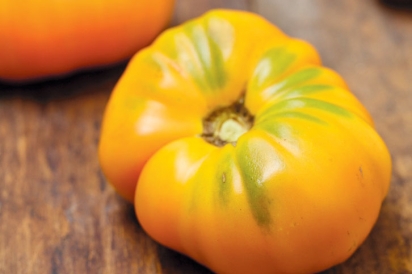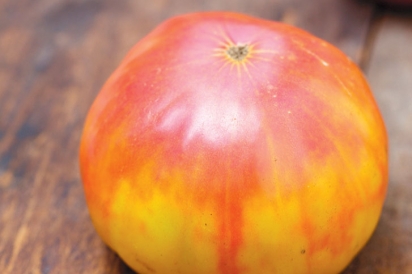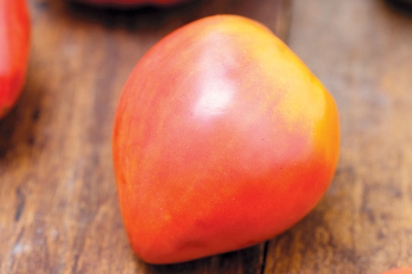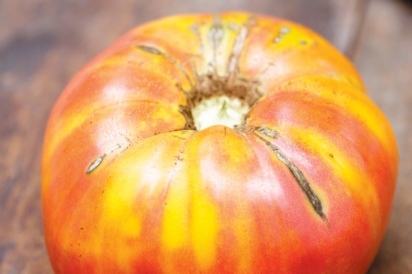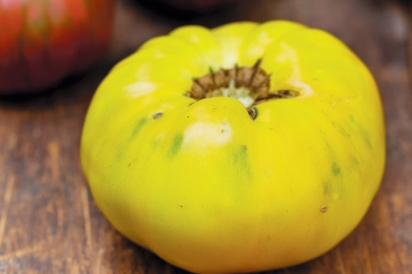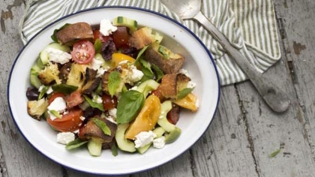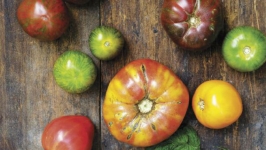Heirloom Tomatoes: The Enticing Appeal of Nature's Tastiest Beauties
They’re whorled and bulbous, pear-shaped, elongated or round like ping pong balls. They range in color from dark maroon to chartreuse striped with grassy green to rosy pink to bright orange. They’ve got strange, old-fashioned names like Yellow Brandywine, Virginia Sweets, Jersey Devil and Zapotec Pink. Some are great for making tomato paste or sauce; some are perfect for simply slicing and eating raw; others work to great advantage in stuffings and sautés.
Welcome to the world of heirloom tomatoes, a vast category of tomato plants that are open-pollinated culitvars.
Heirlooms are coveted by chefs and eaters alike and are becoming increasingly popular with home gardeners. Though there is no nationwide regulated standard for them, most experts agree that the plant variety must have been introduced before 1951, which is when plant breeders began to hybridize inbred plant lines, and that they must have been grown from a variety at least 100 years old. The plant also must have been open-pollinated by natural means, including birds, dew, wind or insects. Another way to look at them is as “heirloom” crops that have been handed down from one family member to another over many generations.
“People love heirloom tomatoes,” said Lindie Markovich, farm manager of historic Casey Farm in Saunderstown. Every year on a Saturday in late August, the farm hosts a free, morning-long tomato tasting event, which was formerly called Tomato Day. Now known as Taste of the Market, it includes tastings of other vegetables grown by farmers who sell at Coastal Growers’ Market (held outdoors at Casey Farm on Saturdays from May to October). This year’s event takes place on August 29.
“It starts with their appearance, which is so beautiful and intriguing,” said Markovich. “There are so many varieties that you want to taste all of them.”
She answers lots of questions from home gardeners too:
Should you take the suckers off? (No.)
Should you feed them? (Yes: She uses fish emulsion and aged chicken manure.)
Should you start the seeds in a greenhouse? (Yes.)
A main point she stresses is that heirloom tomatoes are naturally selected, not genetically modified, and, as such, maintain heritage and diversity in an increasingly genetically manipulated natural world.
For his part, farmer Skip Paul of Wishing Stone Farm in Little Compton grows 28 varieties of heirloom tomatoes. “There’s hundreds of varieties but I don’t want the junky ones,” he said.
“They taste great and people love them,” he said, but, unlike modern hybrids, they are very susceptible to bacterial attacks and root disease. “They’re kind of a gamble,” he said. He grows most of his plants in a greenhouse to keep them dry. “If you get a wet year, you’re in trouble.”
And there’s not a lot of financial “payback,” he added. At the beginning of the harvest organic heirloom tomatoes sell for about $4.95 a pound but once the harvest is fullon, the price drops to about $2.50 a pound. Still, there’s no stopping chefs’ and consumers’ enthusiasm for the tomatoes’ eye appeal and flavor.
Matt Gennuso, who with his wife, Kristen, owns Chez Pascal in Providence, is one of these chef aficionados. For the last 12 years, he’s done a one-night Celebration of the Tomato dinner in late August or early September, when heirloom tomatoes are at their peak. He procures some 14 to 16 different varieties from local growers including Dan Geer, Diana Kushner of Arcadian Fields Organic Farm, White Barn Farm and Langwater Farm.
Different tomatoes have different textural and flavor properties, and Gennuso is always experimenting with his menus. Last year, he combined Prudence Purple, Cherokee Green, Lemon Boy and Black Sea tomatoes with charred corn, black beans and a creamy bacon vinaigrette to create a colorful, smoky, crunchy salad. The year before, using Indian Moon and Sunkist tomatoes, he devised an unusual almond, tomato and coconut crumble dessert accompanied by a sweet tomato and basil salad, tomato syrup and tomato gelato.
Not all growers wax lyrical about heirloom tomatoes, and tomato plants in general. According to Dan Barber, chef and co-owner of renowned farm-to-fork restaurants Blue Hill in Manhattan and Blue Hill at Stone Barns in Pocantico Hills, New York, and author of The Third Plate: Field Notes on the Future of Food, “... while heirloom tomatoes are traditionally the all-stars of the farm-to-table movement... what I never realized is that they’re basically the Hummers of the vegetable world.” They take up a lot of space and they’re hard on the land, he explained. Not to mention, they are expensive.
Lindie Markovich of Casey Farm agrees. “We have to rotate them to a different area on the farm each year, and use a lot of cover crops to help rebuild nutrients in the soil,” she said.
Still, there’s no stopping the collective heirloom tomato fever among the public, especially in New England with a season so fleeting, yet so sweet. Last year’s tomatotasting event attracted over 1,000 visitors and it’s anybody’s guess how many people will stop by this year to indulge in these tasty beauties.
Where to get your summer taste of heirloom tomatoes
• Visit WishingStoneFarm.com for a list of their five weekly markets.
• Visit CoastalMarket.org for info on Taste of the Market Day, August 12, 2017.
• Visit Chez-Pascal.com for the Celebration of the Tomato dinner September 6, 2017.
• Visit farmers’ markets around Rhode Island (see page 59).
• Visit Casey Farm at HistoricNewEngland.org for their annual spring plant sale (with an abundance of tomato plant starts).
• Visit SeedSavers.org and JohnnySeeds.com to grow your own from seed.
• Follow @EdibleRhody on Instagram: When we spot ‘em, we’ll share.


